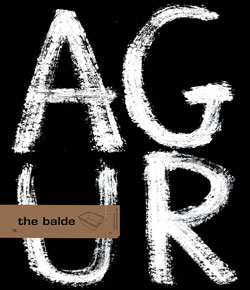cambodian rock
During the Vietnam War, there was a steady staple diet of rock music on the US Army’s military radio broadcasts. The radio waves reached the inhabitants in neighbouring Cambodia and young people there soon made it their very own. From 1964 to 1975, Cambodia was invaded by hypnotic dance rock that mixed traditional melodies and instruments with Western rock. 1964. Phnom Penh. The capital of Cambodia. It’s been ten years since the French upped and left. The populace are breathing in the fresh air of freedom. However, there are some French customs that the locals have held onto. Cafes, dance halls, nightlife... Cambodia was a blossoming new place to be. People wanted to have fun and as mentioned above, thanks to radio waves, young people immediately got into the new hook-filled music that was coming from their war-torn neighbours.
Sinn Sisamouth was the King of Cambodian rock. This university student was one of the dance hall nightingales and he and his band became well-known very quickly. He became the favourite of the Cambodian Queen, due to his ballads like “Waiting for the moon” and “Moonlight my love”. However, more than the queen-knicker-wetting ballads, garage was king. The youth wanted to rip it up through the night and dance. As well as his ballads Sinn Sisamouth recorded indescribable free-form versions of songs coming from English-speaking countries. Some examples are “I’m still waiting” (The Animals’ “The House of Rising Sun”), “I love petite woman” (Santana’s “Black Magic Woman”) or “Always Hope” (The Beatles’ “Hey Jude”).
Leaving aside “King” Sinn Sisamouth, the major stars of 1964-75 Cambodian rock were female singers. Ros Sereysothea often sang with Sisamouth, but when she sang alone she tended more towards psychedelic surf rock. My favourites, the young Pan Ron, sang in the same tones as the playful nasal voices of Basque triki-pop duets. If Peter Sellers had known them, I’m sure he would have put their cheerful frolicsome garage-esque music in his film “The Party”.
There was a coup d’etat in Cambodia in 1970 and the monarchy had to flee the country. Countries that until then been neutral sided with the Americans. The new regime regularly used rock bands as a propaganda tool. Rock was still to be heard in the Phnom Penh night, but the reasons to dance were quickly disappearing. Cambodia also soon began to suffer the consequences of the Vietnam War. On the one hand, US Army bombing affected people in jungle and rural areas, and there were also the Khemer Rouge massacres. Even without music, the situation was still rather “psychedelic”. In 1975, Pol Pot came to power, and amongst other things, rock music was banned. Anybody who was connected to rock music was assassinated (as happened to a quarter of the Cambodian population). Recordings were destroyed and the biographies and public memory of these rock artists were wiped out. Thanks to recordings saved on some cassettes and records, from the perspective of today we can view the transitory flowering of what comes across to us as a science-fiction generation.
http://www.aquariumdrunkard.com/2009/01/08/cambodia-rocks-sounds-from-the-60s-70s/
Sinn Sisamouth was the King of Cambodian rock. This university student was one of the dance hall nightingales and he and his band became well-known very quickly. He became the favourite of the Cambodian Queen, due to his ballads like “Waiting for the moon” and “Moonlight my love”. However, more than the queen-knicker-wetting ballads, garage was king. The youth wanted to rip it up through the night and dance. As well as his ballads Sinn Sisamouth recorded indescribable free-form versions of songs coming from English-speaking countries. Some examples are “I’m still waiting” (The Animals’ “The House of Rising Sun”), “I love petite woman” (Santana’s “Black Magic Woman”) or “Always Hope” (The Beatles’ “Hey Jude”).
Leaving aside “King” Sinn Sisamouth, the major stars of 1964-75 Cambodian rock were female singers. Ros Sereysothea often sang with Sisamouth, but when she sang alone she tended more towards psychedelic surf rock. My favourites, the young Pan Ron, sang in the same tones as the playful nasal voices of Basque triki-pop duets. If Peter Sellers had known them, I’m sure he would have put their cheerful frolicsome garage-esque music in his film “The Party”.
There was a coup d’etat in Cambodia in 1970 and the monarchy had to flee the country. Countries that until then been neutral sided with the Americans. The new regime regularly used rock bands as a propaganda tool. Rock was still to be heard in the Phnom Penh night, but the reasons to dance were quickly disappearing. Cambodia also soon began to suffer the consequences of the Vietnam War. On the one hand, US Army bombing affected people in jungle and rural areas, and there were also the Khemer Rouge massacres. Even without music, the situation was still rather “psychedelic”. In 1975, Pol Pot came to power, and amongst other things, rock music was banned. Anybody who was connected to rock music was assassinated (as happened to a quarter of the Cambodian population). Recordings were destroyed and the biographies and public memory of these rock artists were wiped out. Thanks to recordings saved on some cassettes and records, from the perspective of today we can view the transitory flowering of what comes across to us as a science-fiction generation.
http://www.aquariumdrunkard.com/2009/01/08/cambodia-rocks-sounds-from-the-60s-70s/



